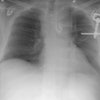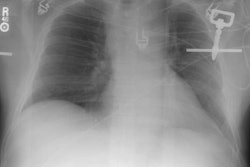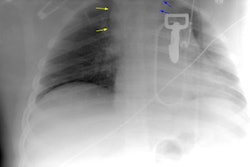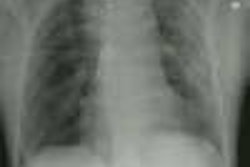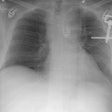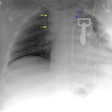Flail Chest:
Clinical:
The strict definition of flail chest is the fracture of at least three to four consecutive ribs in two or more places- these fractures create a flail segment that can move paradoxically during respiration [3]. The functional definition of flail chest is an incompetent segment of chest wall with paradoxical motion during respiration and is large enough to impair a patient's respiration/ventilation [2,3,4]. For practical purposes, if the patient has 4 to 5 or more adjacent rib fractures, or more than 3 segmental rib fractures (ie: multiple fractures per rib) a flail chest should be suspected [4]. The diagnosis of flail chest is ultimately determined by the physical examination of the chest during breathing, the appearance of the CXR, and the degree of physiologic impairment manifested by the patient. Posterior flail segments are supported by overlying muscles and scapulae and may not cause serious complications [4]. Anterior and lateral flail segments can more commonly impair respiratory function and predispose to atelectasis and infection [4]. There is also frequently associated pulmonary contusion which will also impair gas exchange. Treatment usually requires mechanical ventilation, aggressive pulmonary toilet, and pain control. Internal fixation of the rib fractures may aid in speeding recovery, decrease the rate of complications, and improve the final function result [1]. Flail chest serves as a marker for significant intrathoracic injury as more than 50% of affected patients may have associated injuries requiring surgical treatment [3].
X-ray:
A characteristic finding in flail chest is the presence of a "costal hook" in which the fractured and medially displaced ribs project over the adjacent aerated lung.REFERENCES:
(1) J Thorac Cardiovasc Surg 1995; 110: 1676-80
(2) Chest Surg Clin N Am 1997; The fractured rib in chest wall trauma. 7 (2) May: 239-260
(3) Radiographics 2008; Kaewlai R, et al. Multidetector CT of blunt thoracic trauma. 28: 1555-1570
(4) AJR 2009; Ho ML, Gutierrez FR. Chest radiography in thoracic polytrauma. 192: 599-612
